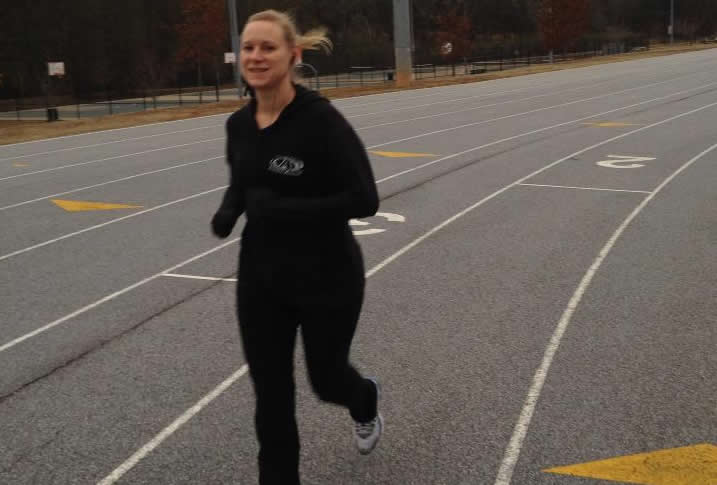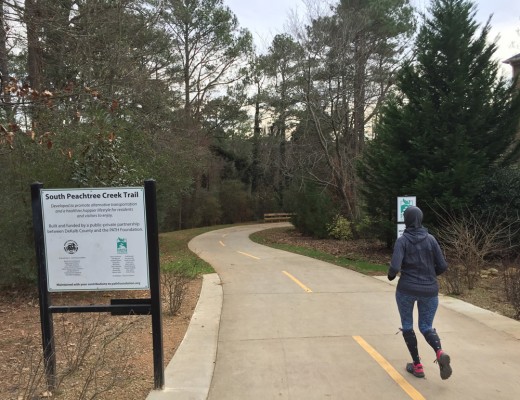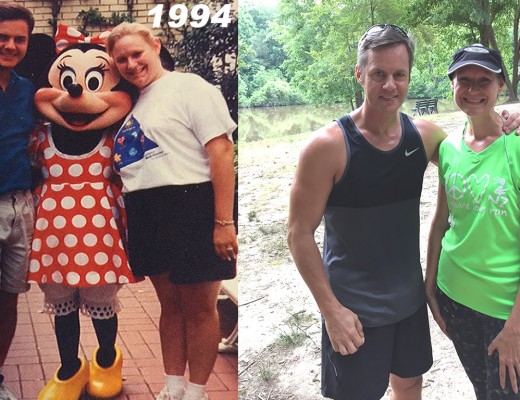Three Miles of Hard Effort to Improve 5K/10K Running Performance
Want to improve your 5K / 10K running speed and performance? Here’s a quick tip and general rule of thumb that works for me – three miles of hard effort for intervals and tempo runs.
In a previous article we talked about three different workouts to improve your running:
- Intervals – improve speed
- Tempo runs – improve stamina
- Long runs – improve endurance
We’re going to focus on those first two types of workouts in this article. If you’re training for a 5K or 10K, then the hard effort portion of your interval workouts and tempo runs need only be about three miles in length. If you add in the warm-up and cool-down, then you’re looking at a 5-6 mile total workout – which is probably what you do on a daily basis anyway. Here’s how it might work.
Intervals
Your interval session could be done on the track or on the road (using a GPS). Each interval session should include a warm-up of 1-2 miles and a cool-down of 1-2 miles. In between each hard effort include a rest/recovery option of walking or slower running/jogging. Here are some ways you might structure three miles of hard effort for an interval session on the track:
- 3 x 1 mile (1/4 mile walk/jog in between)
- 6 x 800 (1/8-1/4 mile walk/jog in between)
- 4 sets of 4 x 400 (1/8 mile walk/jog in between, 1/4 mile walk/jog between sets)
In general, the shorter intervals (400m) focus more on pure speed and the longer intervals start to work stamina. I personally think the 800m interval is the best all-purpose interval distance to train 5K and 10K. When I start to get stale with 800’s, sometimes I’ll switch to 400m to work on pure speed or 1 mile for stamina.
If you’re new to the track, keep in mind the following distances. One lap around a standard track is 400m, which is about 1/4 mile. For training purposes, I consider 4 laps a mile (even though it’s just a tad short of that). 1/8 mile is half a lap. In order to even out the “tilt” of always running in the same direction on the track, I usually run the warm-up and cool-down in the opposite direction in the outermost lane.
Tempo Runs
Tempo runs could be done on a track, but that’d be kind of boring. I like to do mine on the roads. If you’re looking to maximize pace, then look for a generally flat course. If you want to challenge yourself, run your tempo run on rolling hills! If you do a tempo run on rolling hills, keep in mind the work effort to go uphill will be much harder than what you “get back” on the downhill. Here’s how you might structure a three mile tempo run.
- 1-2 mile warm-up
- 3 miles hard
- 1-2 mile cool-down
Even though it’s a bit longer than 3 miles of work effort, one particularly tough workout is a 2 x 2 mile tempo run. Simply take that three mile hard effort and split it into 2 two-mile segments with about a half-mile of recovery in between. I sometimes call that a “tempo sandwich”.
Pacing
How fast should you run your intervals and tempo runs? There are some great books, online resources, and coaches that are more qualified than I am to help you pinpoint the optimum paces. Frankly, I think some of the pace calculation systems are just too elaborate and complex to be useful. In fact entire books and training programs have been written about proper pacing, so out of necessity we’ll keep things simple here.
I’m going to share with you my own rules of thumb based on what I use. First, it’s important to establish a base “race pace” (how’s that for a rhyme?). Like most training systems, I like to use the 5K as the benchmark. As I’m writing this my current 5K times have been around 20:30 (which is a 6:36 min/mile average).
Interval pacing should be “hard” but not all out, lest you wear out before the entire workout is complete. Because you get rest during an interval workout, the pace should be faster than race pace. The shorter the interval, the faster than race pace you can go. Because the math can get complicated, many people consult a pacing chart. One of my favorites is the McMillan Running Calculator. Here’s how I figure things out.
- 400m – about 10% faster than 5K race pace (1:28-1:30 for me)
- 800m – about 5-7% faster than 5K race pace (3:03-3:05 for me)
- 1 mile – about 3% faster than 5K race pace (6:25 for me)
Tempo run pacing should be “comfortably hard” and is usually about 5-7% slower than 5K pace. Another rule of thumb you could use is 20-30 seconds slower than 5K pace. Right now, that means I’m doing my tempo runs at pretty close to a 6:55-7:05 min/mile pace. Instead of speed, you could also use intensity. If you’re wearing a heart rate monitor, then typically your tempo pace is 85-90% of your heart rate max (HRmax).
Summary
Training for speed and performance can get complicated in a hurry. Rules of thumb are helpful in quickly establishing some guidelines for training. When I’m training for a 5K or 10K, then I like to structure my intervals and tempo runs to include at least three high-quality miles. Don’t forget, as you get faster you’ll need to adjust your pacing. What’s difficult pace today will be easy for you in a few weeks after you do the workouts.







